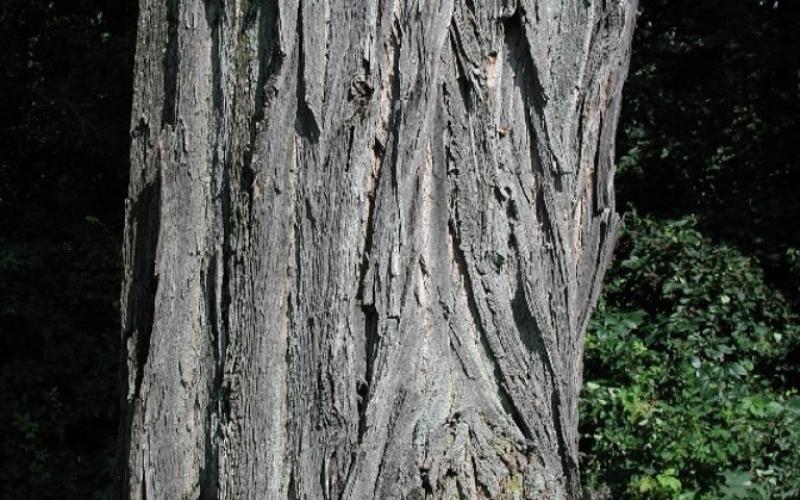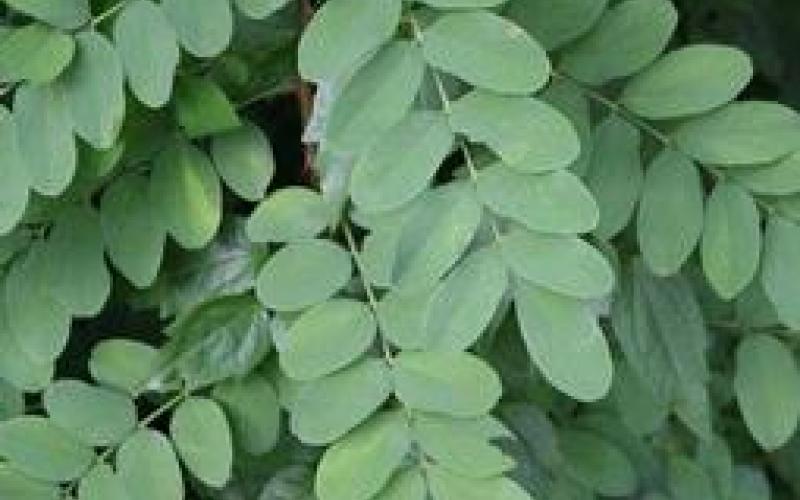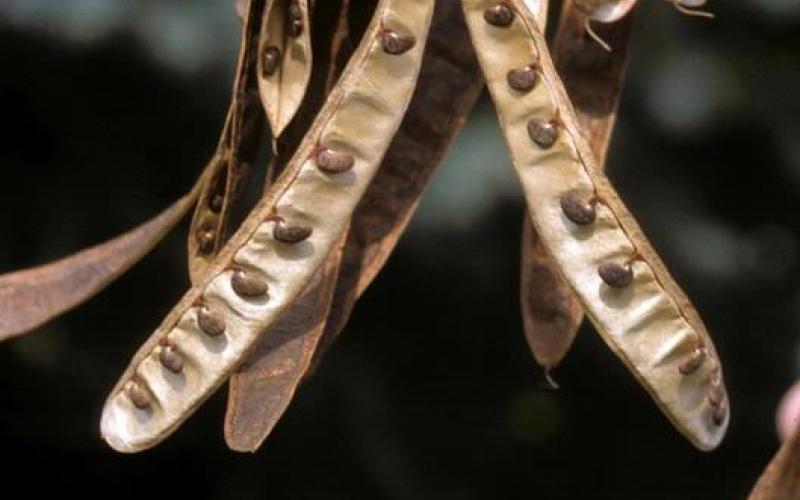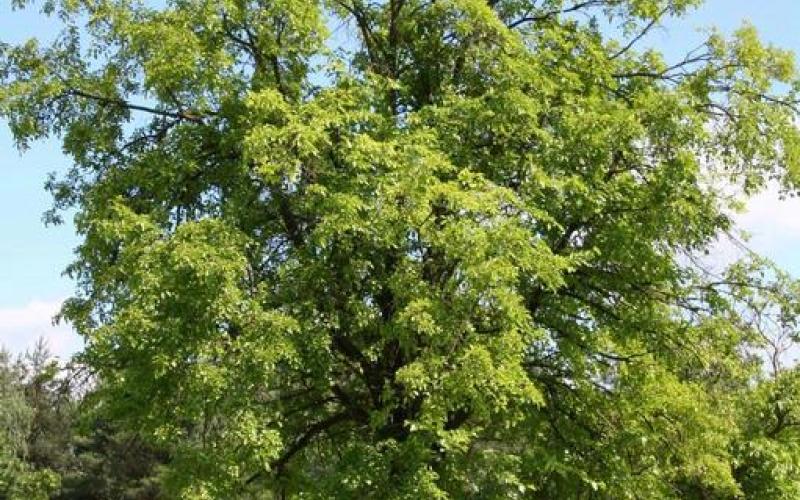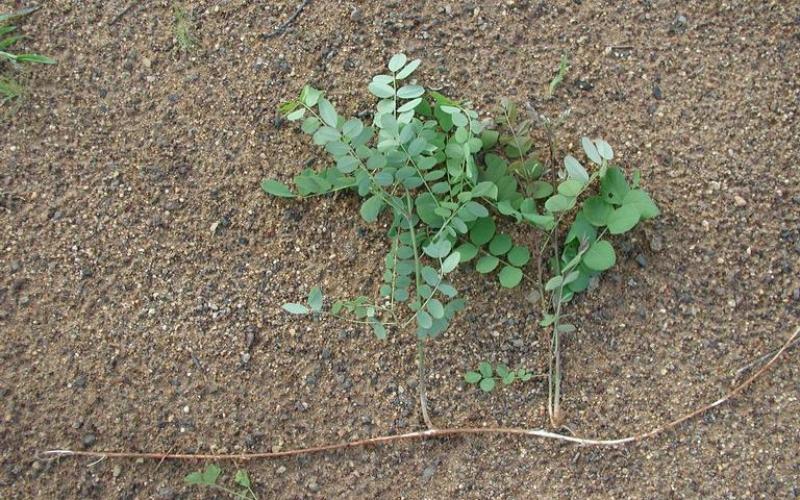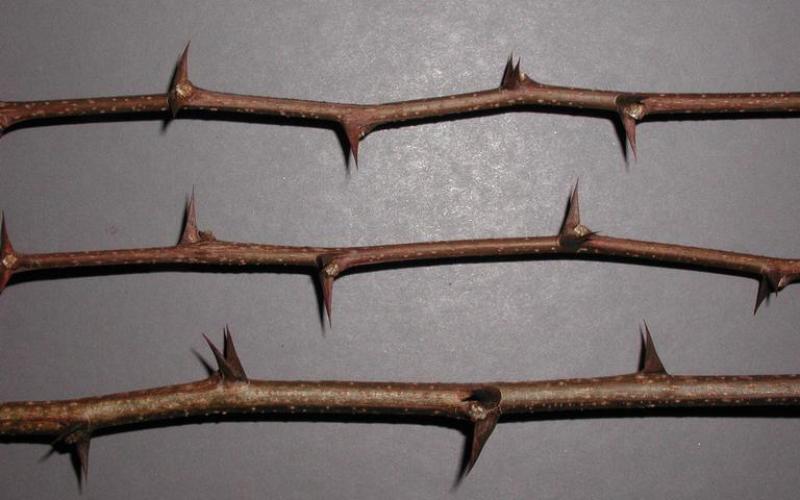Common Name: Black Locust
Scientific Name: Robinia pseudoacacia L.
Legal Status
Propagation and sale of this plant are prohibited in Minnesota. Transportation is only allowed when in compliance with Minnesota Statute 18.82. Although Restricted Noxious Weeds are not required to be controlled or eradicated by law, landowners are strongly encouraged to manage these invasive plants on their properties in order to reduce spread into new areas.
Background
Black locust is native to North America, but not to Minnesota or the Upper Midwest. It is native to the Appalachian region and the Ozarks, where it is also considered a weed. It has been widely planted as an ornamental, for land reclamation, for erosion control, and for honey production. Black locust is spreading into new areas and is now a threat to other states which are outside of the historical range.
Description
- Black locust is a fast-growing tree in the legume family. Seedlings are easily identified by long pairs of thorns. Adults can reach 40 - 90 feet in height.
- The leaves are alternate, pinnately compound with 7 - 21 oval leaflets. There is a pair of short, sharp thorns at the point where each leaf attaches to the twig.
- The bark of young saplings is smooth and green, while the bark of mature trees is dark brown, deeply furrowed, with flat-topped ridges.
- Flowers are showy, fragrant, and white, appearing in drooping clusters with a yellow blotch on the uppermost petal, and pollinated by bees. Trees bloom in May and June.
- Fruit pods are smooth, flat, 2 - 4 inches long, and contain 4 to 8 seeds.
- The fibrous roots can range from shallow to deep, depending on the soil type, and are wide-spreading; highly adventitious, suckering especially after being cut or damaged, and creating dense thickets of new growth.
Habitat
The native habitats of black locust are temperate, moist to wet forests and wooded slopes. It will invade disturbed sites such as old fields, cleared areas, and degraded woods and thickets.
Means of spread and distribution
Black locust spreads mainly through intentional human plantings and disturbance. The seeds are long-lived, remaining viable in the soil for up to 10 years, although the seeds generally have poor germination rates. Seed can spread moderate distances by wind, gravity, and possibly birds. The seedlings can sprout and grow fast, enabling this species to colonize disturbed sites very quickly. Once established on a site, the trees reproduce vigorously by root suckering and stump sprouting to form clonal groves linked by a shared root system.
Black locust occurs throughout the Eastern U.S., from the East Coast to the Great Plains states. In Minnesota, it has been reported in about half of the 87 counties.
Impact
Black locust can outcompete and exclude other tree species and native prairie and savanna plants. It can form a monoculture on disturbed sites.
Being a legume, it has the ability to fix nitrogen in the soil and as a result, it may alter local soil characteristics. By increasing soil nitrogen, it can create a favorable habitat for other colonizing nonnative species.
Prevention and management
- Once established, black locust is difficult to control. For all management options, infestation sites will need to be monitored and treated repeatedly until the seedbanks and root reserves are depleted. Sprouts and stumps that appear to have died can resprout even years down the road, so annual monitoring should be conducted and follow-up treatments administered.
- Mowing and burning alone can stimulate suckering and clone production and thus is only recommended in conjunction with herbicide treatment. Black locust seeds can be stimulated to germinate in response to fire as well.
- Large infestations can be controlled with cut-stem herbicide applications. Herbicides applied to the stems or cut stumps spread into the root system and provide better control. In large, dense infestations with little else growing, foliar applications of herbicide can be effective. When using herbicide treatments, always check with your local University of Minnesota Extension Agent, co-op, or certified landscape care expert for assistance and recommendations. There are several businesses throughout the state with certified herbicide applicators that can be hired to perform chemical applications.
Toxicity
Black locust leaves, stem, bark, and seeds contain robin, a toxic compound. Ingestion results in gastrointestinal and neurological dysfunctions which are particularly acute in horses and can be fatal.

